The Ultimate Guide to a Busy Board for Toddlers: Benefits, Tips, and Ideas
Blog Content
- What is a Busy Board
- Benefits of Busy Board for toddlers
- Tips on how to choose a Busy Board for toddlers?
- Ideas for a Busy Board for toddlers
- Fun busy board
- Latches and doors busy board
- Busy board early learning
- The Traveller busy board
- The Challenger busy board
As a parent, you want to provide your toddler with tools that are not only fun but also help them learn and grow. This is where a Busy Board comes in. They are a great way to stimulate your toddler’s cognitive, motor, and sensory skills, all while providing hours of screen-free entertainment. In this article, we will discuss what Busy Boards are, the benefits they offer, and provide tips on how to choose the right board for your child. We will also share some exciting ideas for different types of Busy Boards that you can create for your toddler. So, if you’re a parent looking for a fun and educational tool for your toddler, read on to learn more about the world of Busy Boards!
What is a Busy Board?
A Busy Board is a sensory and educational product that is designed to help toddlers develop their cognitive, motor, and sensory skills. It is a board filled with various objects that can be manipulated, twisted, turned, and explored. The Boards are typically made out of wood or other sturdy materials and are customised with items that will appeal to toddlers, such as locks, latches, buttons, knobs, and levers.
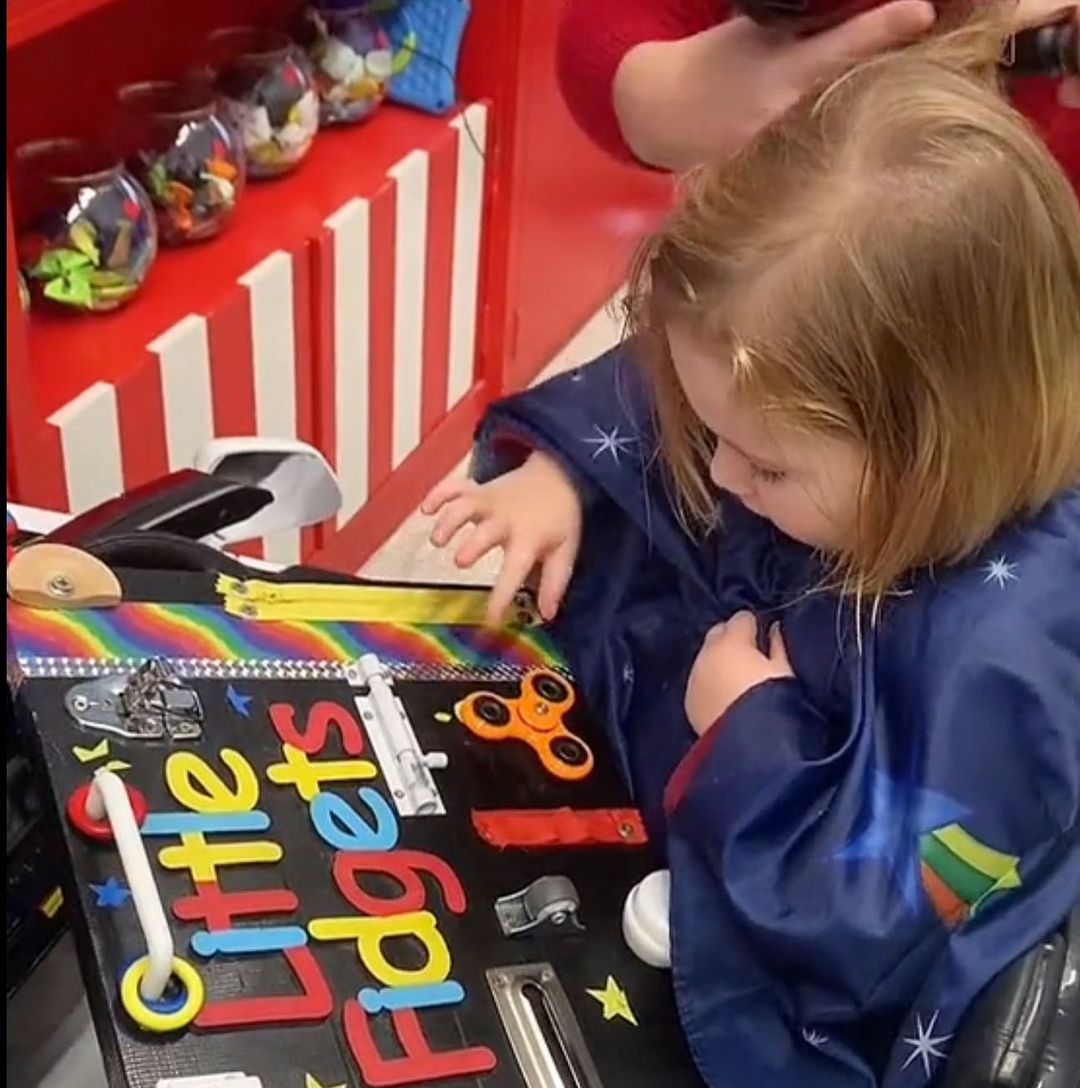

Busy Boards offer a range of benefits for toddlers, including:
Development of fine motor skills: They provide a perfect opportunity for toddlers to practice their hand-eye coordination, dexterity, and fine motor skills. The small buttons, locks, and latches on the board require precise movements and control, which helps to develop their hand muscles and refine their hand-eye coordination.
Sensory stimulation: These provide a sensory-rich environment for toddlers, which can help to enhance their cognitive development. The different textures, colours, and sounds on the board can help to engage their senses and spark their curiosity. Sensory stimulation can also help to promote brain development, enhance memory, and encourage creative thinking.
Encourages problem-solving: Busy Boards encourage toddlers to use their problem-solving skills to figure out how to manipulate the different objects. This helps to develop their cognitive and logical thinking skills. Toddlers learn to identify cause-and-effect relationships, think critically, and come up with creative solutions.
Provides a screen-free alternative: Busy Boards offer a screen-free alternative to traditional products which can help to reduce screen time and promote active play. With the rise of technology, it’s more important than ever to provide children with opportunities for hands-on, active play. Our sensory board offers a fun and engaging alternative to digital devices, which can help to promote physical activity, social interaction, and imaginative play.
Encourages independence: Helps to encourage toddlers to become more independent and self-reliant. As they explore the different objects on the board, they learn to take risks and solve problems on their own. This can help to boost their self-esteem and confidence, which can have a positive impact on their overall development.
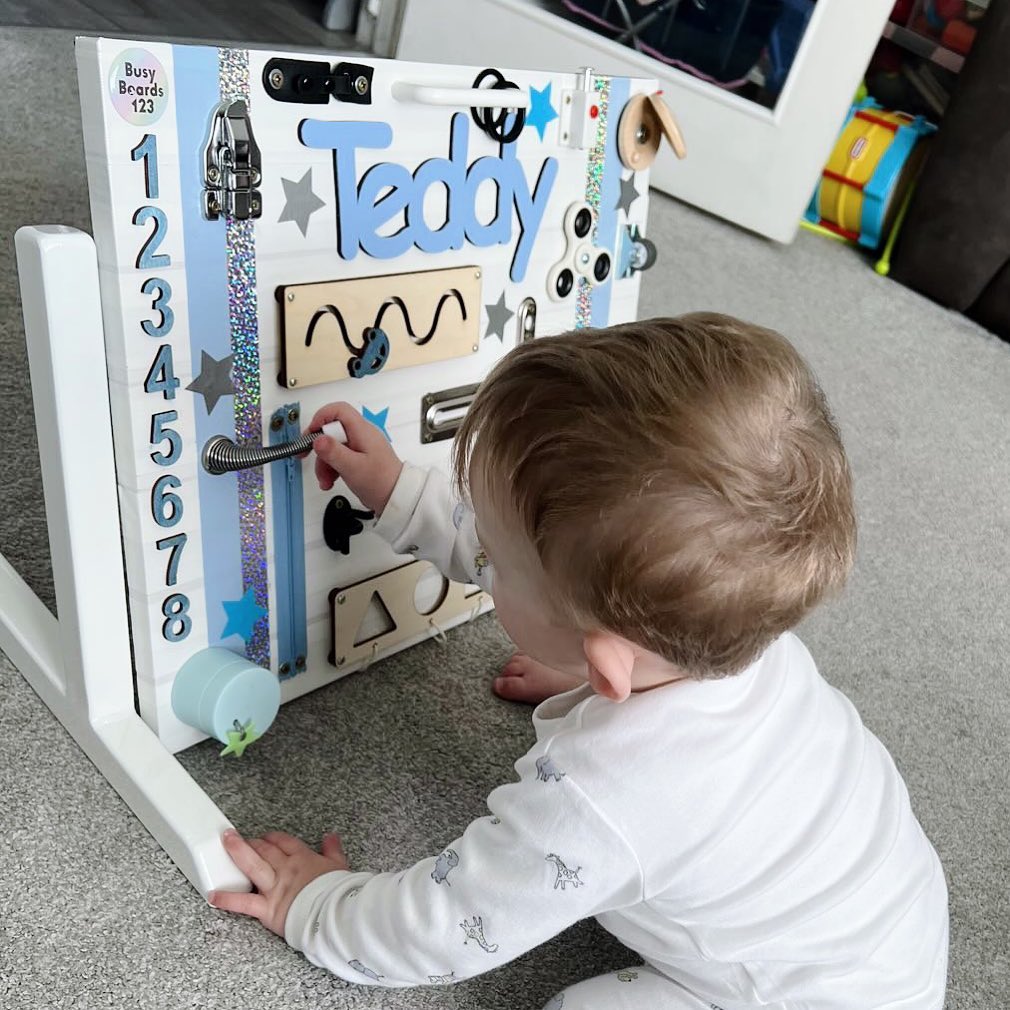

Busy Boards London offers a range of benefits for toddlers, from promoting fine motor skills and problem-solving to providing a screen-free alternative to traditional products. They also provide a sensory-rich environment and encourage independence and self-reliance. They are an excellent investment in your child’s development and can provide hours of fun and learning.
Tips on How to Choose a Busy Board for Toddlers
When choosing a Busy Board for your toddler, consider the following tips:
- Safety: Make sure that the activity board is sturdy and well-constructed. With no loose parts or sharp edges that could harm your child. Busy Boards London are safety tested with an EN71-1 certificate
- Age-appropriate: Choose a board that is appropriate for your child’s age and developmental stage. Younger children may need simpler boards with fewer objects, while older children may benefit from more complex boards with multiple tasks.
- Personalisation: Consider customising the board to your child’s interests and preferences. For example, if your child loves animals, you could include animal-themed objects on the board.
- Portability: If you plan on using the Busy Board while travelling, choose a board that is lightweight and easy to transport.
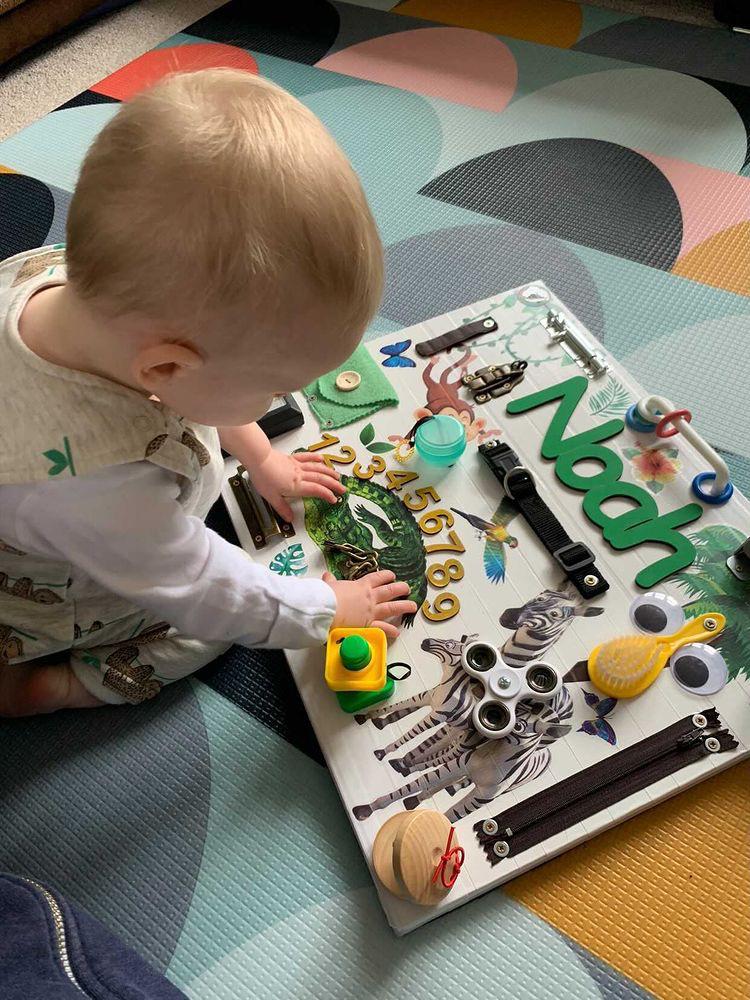
Ideas for a Busy Board for Toddlers
Fun busy board:
This is perfect for toddlers who love colours, textures, and different shapes. It features a variety of objects that are visually appealing and engaging, such as buttons, gears, switches, and beads. Toddlers can manipulate these objects and experiment with cause-and-effect relationships. For instance, pushing a button may cause a light to turn on, or spinning gear may make a sound. This board is not only entertaining but also promotes fine motor skills and hand-eye coordination.
Latches and Doors:
This type of Busy Board is ideal for toddlers who love to explore and figure out how things work. It features a range of doors, latches, and locks of various shapes and sizes. Toddlers need to use their problem-solving skills to figure out how to open each door and latch. They also get to learn about the different types of locks, including clasps, snaps, and hooks. This helps to promote cognitive and logical thinking skills, as well as fine motor skills.
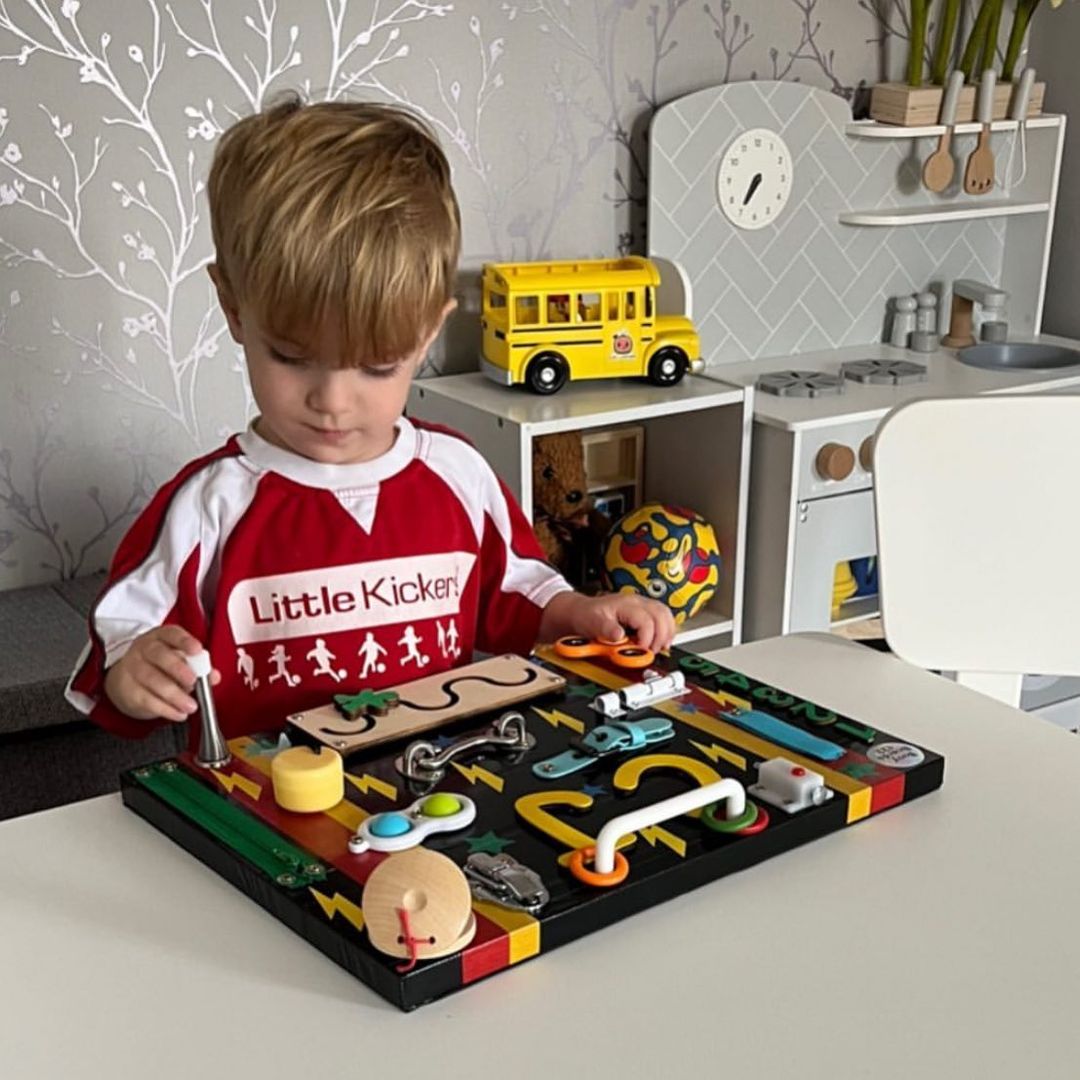
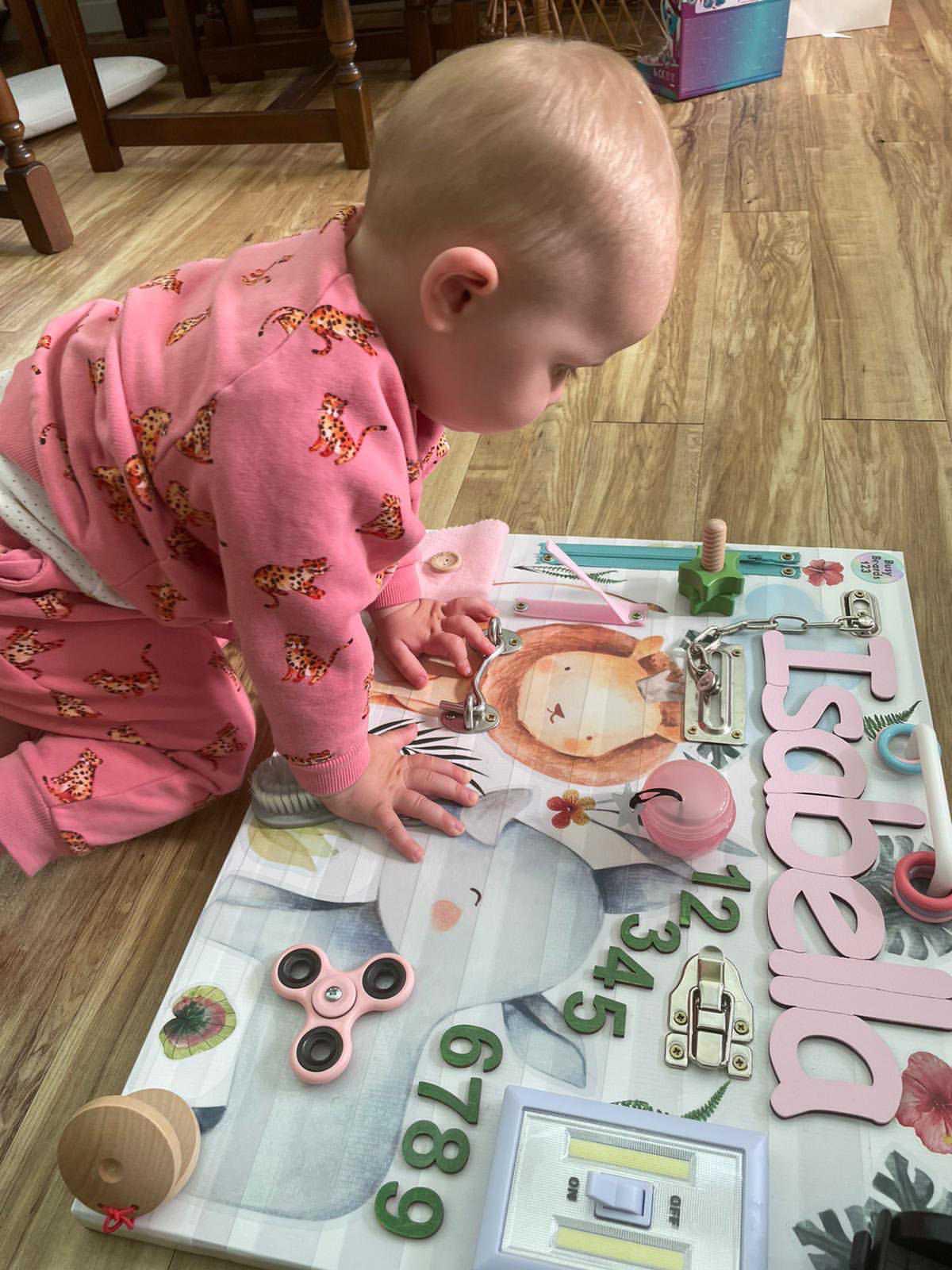
Busy board early learning:
This type of Busy Board is perfect for toddlers who are just starting to learn about shapes, colours, and numbers. It includes objects such as shape sorters, counting beads, and colour-matching puzzles. Toddlers can manipulate these objects and learn basic math concepts like counting and sorting. They also get to learn about different shapes and colours. This board helps to promote early learning and cognitive development.
The Traveller Board:
This is perfect for families on the go. It is designed to be compact and lightweight, making it easy to pack and carry. It includes objects that can be easily manipulated on the go, such as buckles, sippers, and Velcro. Toddlers can practice their fine motor skills while keeping themselves entertained during long car rides or flights. This board helps to promote screen-free play and creativity.
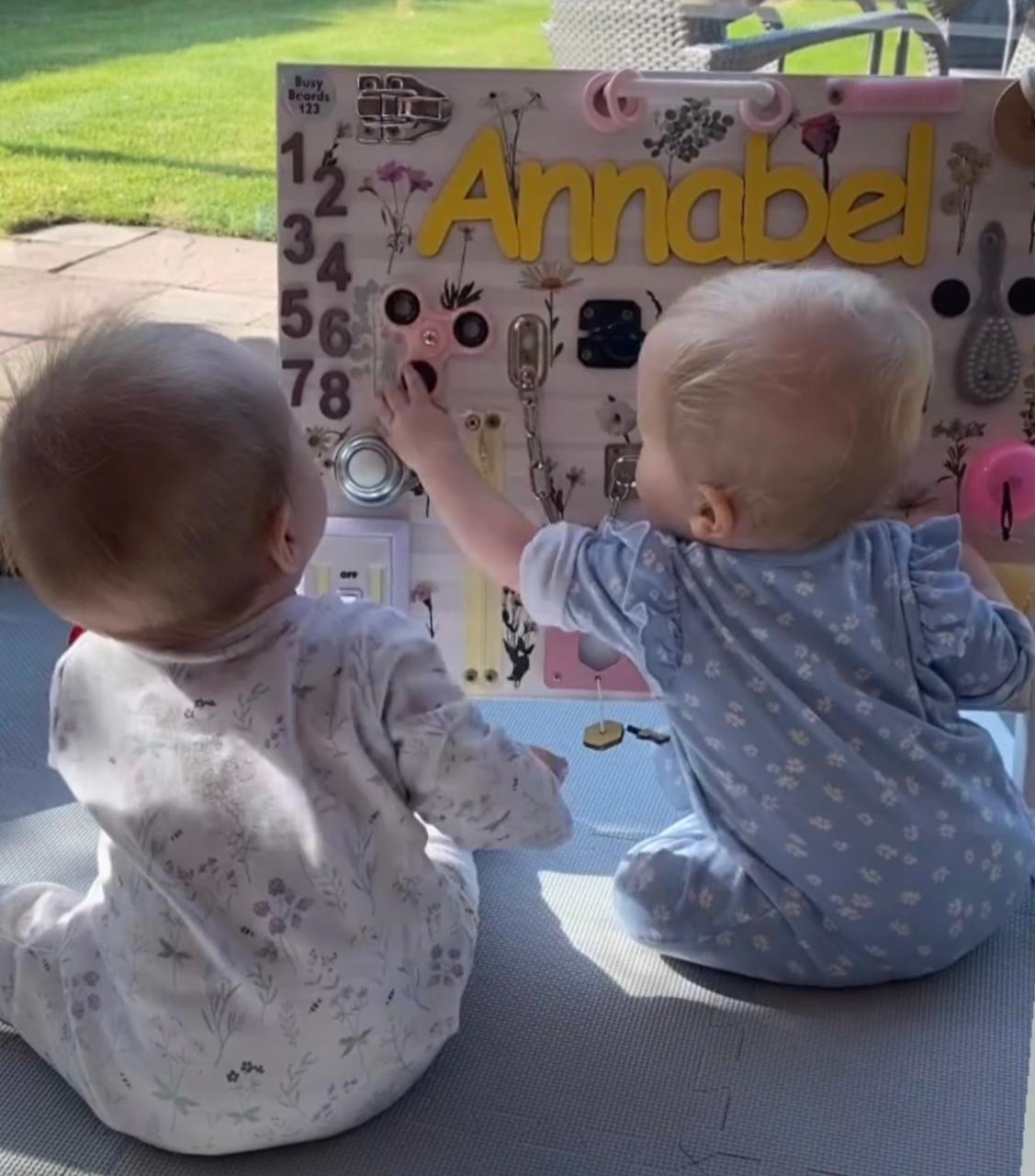
The Challenge board:
This type of Busy Board is perfect for toddlers who love a challenge. It features objects that require critical thinking and problem-solving skills, such as puzzles, mazes, and memory games. Toddlers need to use their cognitive and logical thinking skills to figure out how to solve each puzzle or maze. This board helps to promote cognitive development and keeps toddlers engaged for longer periods.
There are different types available for toddlers, each designed to promote different skills and learning outcomes. When choosing a Busy Board, consider your toddler’s interests, age, and developmental stage. A well-chosen Busy Board can help to promote fine motor skills, cognitive development, and problem-solving skills while providing hours of entertainment and screen-free play.
Busy Boards London offers a range of benefits for toddlers, including the development of fine motor skills, sensory stimulation, and problem-solving. When choosing a Busy Board for your child, consider safety, age-appropriateness, personalisation, and portability.
If you found this information helpful, we invite you to share it with your friends and family who may also have young children. Together, we can promote active play and screen-free alternatives for our little ones!